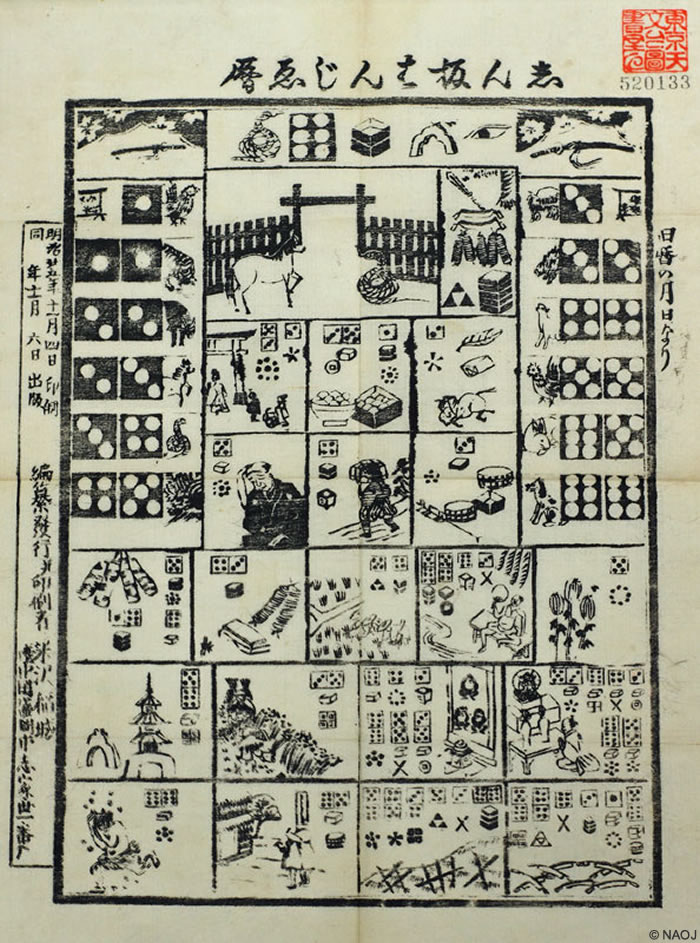Morioka Calendar
Historical illustration・

| First Publication | 1893 (Meiji 26) |
|---|---|
| Author | Inakatsu Yonezawa |
| Credit | Collection of the National Astronomical Observatory of Japan |
Historical illustration・

| First Publication | 1893 (Meiji 26) |
|---|---|
| Author | Inakatsu Yonezawa |
| Credit | Collection of the National Astronomical Observatory of Japan |
Together the “Morioka Calendar” and the “Tayama Calendar” are known as the Nanbu Calendars. The “Tayama Calendar” is a pictorial calendar said to have been created for illiterate farmers in Tayama to assist in agriculture. The “Morioka Calendar” was created in Morioka during the Bunka Era (1804-1818 AD) with influences from the “Tayama Calendar”. It stopped in 1870 (3rd year of the Meiji Era) when the government ban individuals from publishing calendars without permission. However, it was revived in 1884 (Meiji 17) and has continued to be published up to the present day.
Even today, the Morioka Calendar is based on the phases of the Moon. Long and short months (30 day months, and 29 day months) are indicated by the drawings of a katana (long sword) and a wakazashi (short sword). A set of these swords is known as ‘daisho’ (long and short).
This calendar was made in jest or in ignorance. “Meiji 26” is depicted (from right to left) as an eye (“ME” in Japanese); a bridge (“kotoji”) with an accent mark (to indicate you should use the accented sound ‘JI’ from the word); two measuring boxes (“NIJYU-masu”, where NIJYU is homophonous with the number 20) and a die showing 6 dots. If you look at the various months, there are other pictorial symbols. Some are easy to understand like a mustard plant sprout (“keshi”) with an accent mark (to make it “Geshi,” the Summer Solstice). Others are more difficult to understand: a picture of a box being stolen by a thief (“NI-motsu wo UBAI”) to show the Rainy Season (Nyubai); or the 210th day (nihyaku-toka) represented by a 200-mon coin (nihyaku), a millstone (to) and a mosquito (ka). This is a fun calendar to puzzle through.
(Translator's Note: In addition to the standard Gregorian Calendar, Japan continues to use a reign era calendar. The different eras are defined by changes in the Japanese government, and accompanied by changes in Japanese society.)